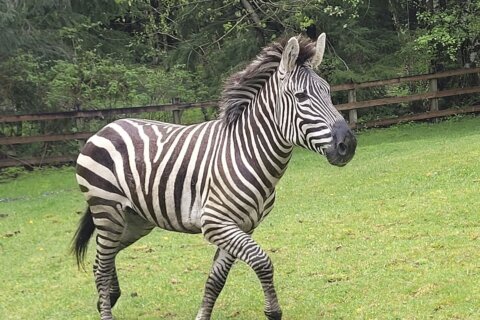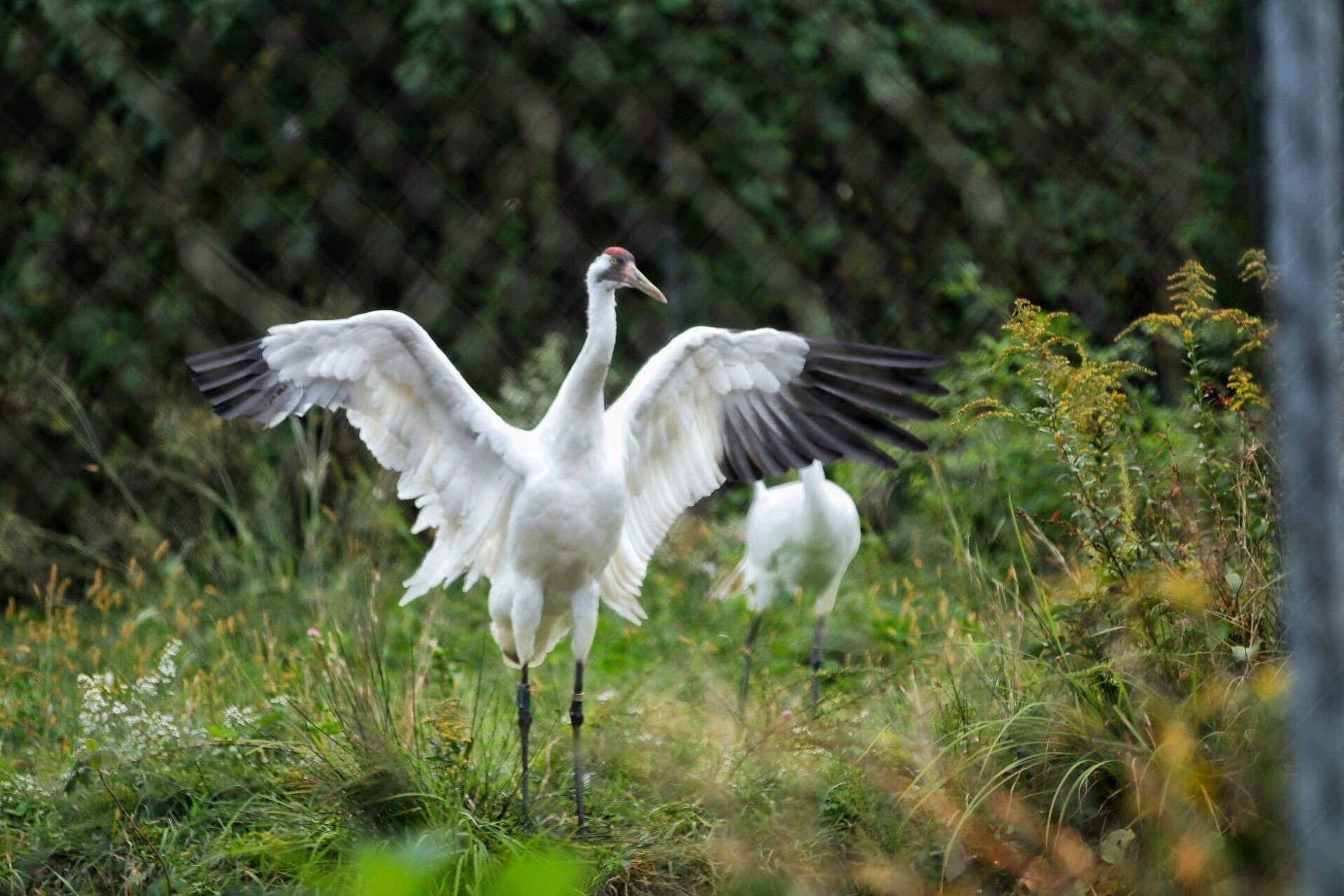
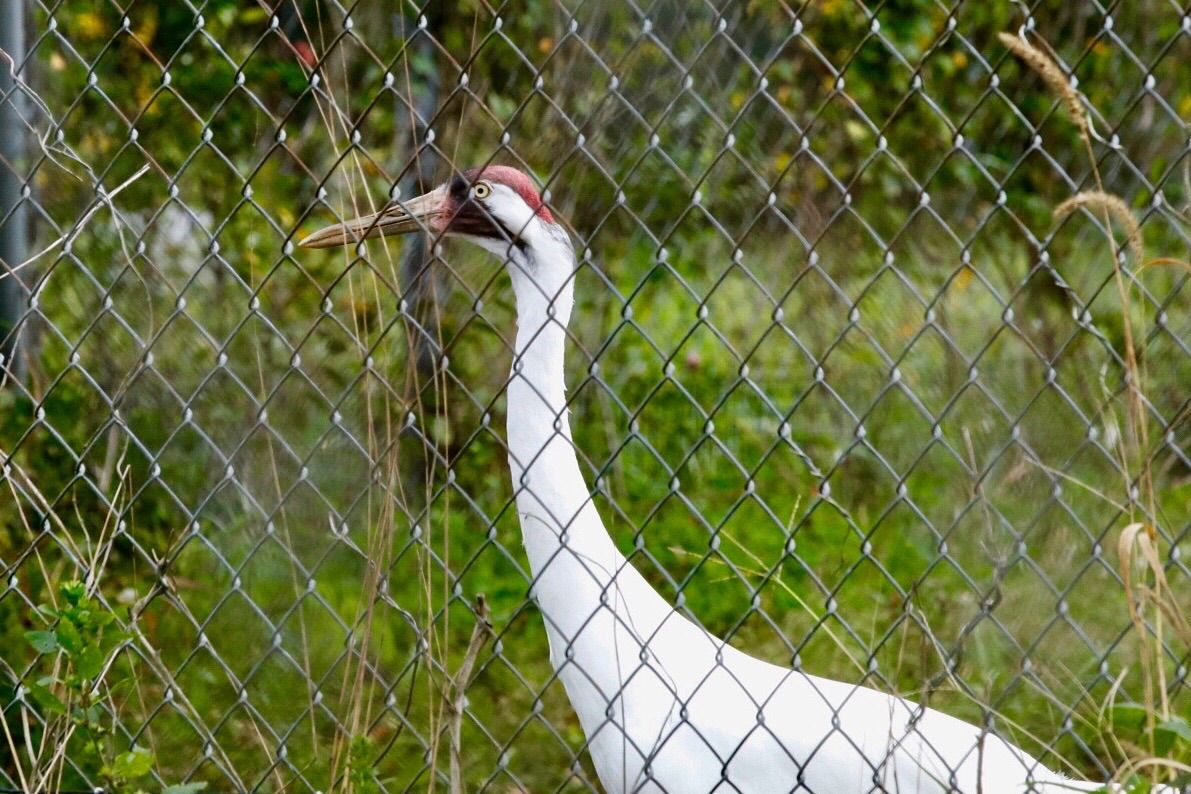
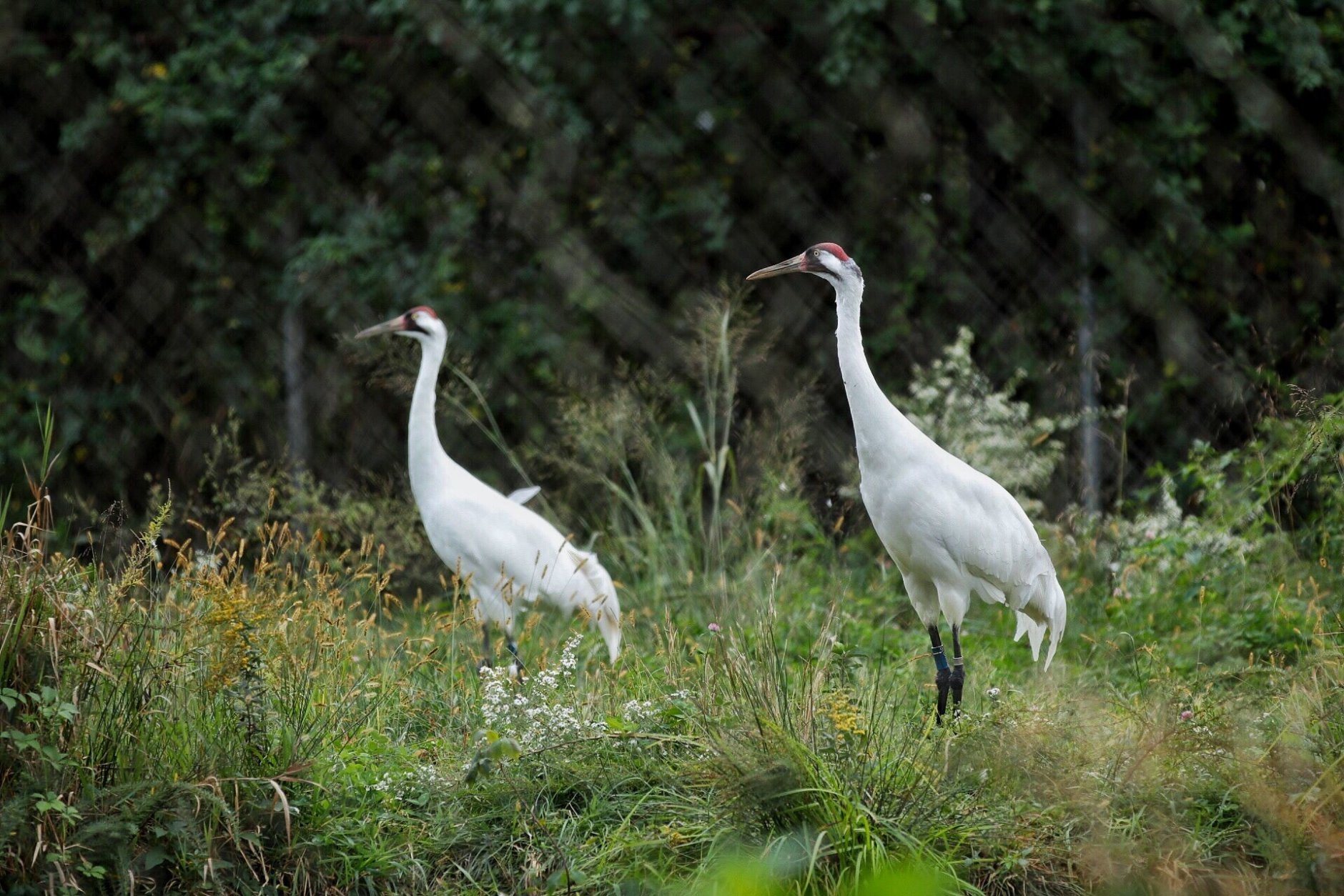
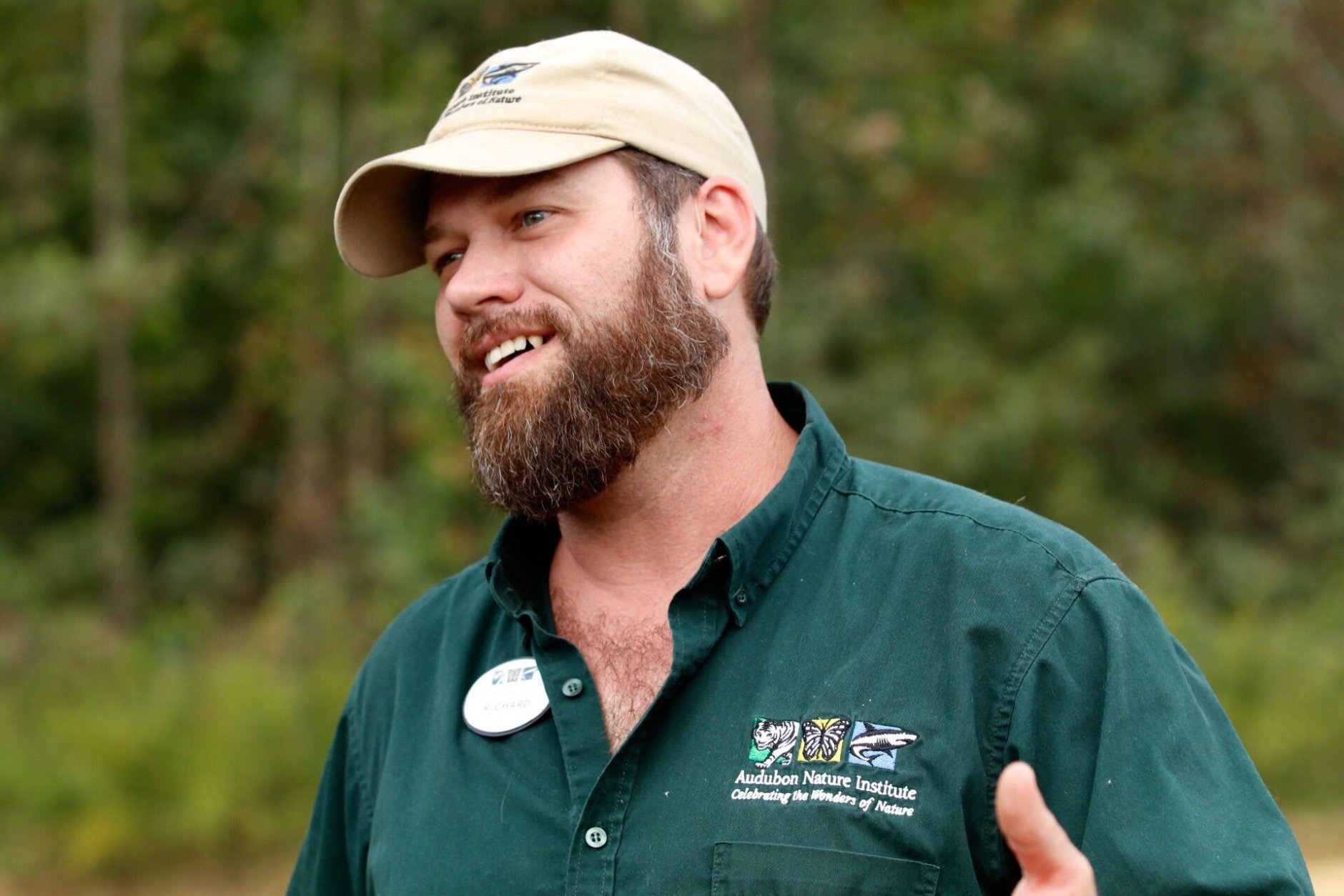

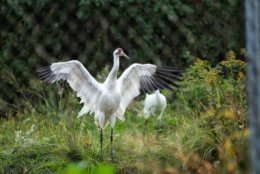
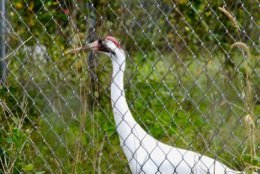
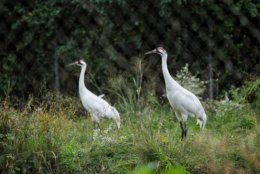


LAUREL, Md. — The sound echoed across the grounds of the Patuxent Wildlife Research Center. From far off, it sounded more like a honk than a whoop, but it was the call of a whooping crane, one of the rarest birds in North America.
The cranes, which stand about 5 feet tall with long black legs and snowy white feathers, have been on the endangered species list since 1967. They’ve been the subject of a captive breeding program at the federal facility in Maryland ever since.
But now, the breeding and research program at Patuxent — a partnership between the U.S. Fish and Wildlife Service and the U.S. Geological Survey — is coming to an end.
The 75 cranes raised and cared for there will be sent to wildlife centers and zoos for continued breeding efforts, display and reintroduction to the wild. Among those receiving some of the cranes is the Audubon Nature Institute in New Orleans, Louisiana.
While wild cranes would migrate under their own power, 33 of these cranes were prepared to take a government flight to the Audubon Nature Institute’s Species Survival Center in Louisiana.
But, there was a hitch. Hurricane Michael delayed their Wednesday flight. They’ll now have a bit more time at their home in Maryland. Another flight has been tentatively scheduled for Oct. 17.
John French Jr., director of the center, said it’s a bittersweet goodbye.
“There are a number of people who’ve spent their entire career working with these particular animals. The folks that we have here at Patuxent that work with the cranes are extremely dedicated and know these birds — all 75 of them — individually. And you naturally get attached to them,” he said.
French said, on the bright side, the move is a sign of success: The program started with just a few eggs at a time when the wild population had dwindled precipitously. At its lowest point in the 1940s, the wild population plummeted to just 16 birds.
Whooping cranes were the victims of the 19th-century craze for decorating hats and clothing with their feathers. They were hunted for their meat and, later, as they became increasingly rare, were caught for private collections.
Allan O’Connell, Fish and Wildlife administrator and crane program manager, said there are currently an estimated 700 whooping cranes, wild and captive populations combined. One big wild flock migrates from Aransas National Wildlife Refuge in Texas up to the Wood Buffalo National Park in Canada.
“This bird is emblematic of the national conservation movement,” O’Connell said.
Out in the wild, the cranes eat small fish, invertebrates and crawfish. O’Connell said there’s an effort to work with farmers who operate crawfish farms in Louisiana to protect the birds, which have a tendency to hang around the farmers’ ponds.
Richard Dunn, assistant curator with the Audubon Nature Institute Species Survival Center in New Orleans, said having the whooping cranes feed at a crawfish farm is preferable to huge flocks of ibis that can do far more damage in terms of consumption.
Cranes and ibis, another long-legged wading bird, compete for food.
Pointing to a pair of whooping cranes at the Patuxent center, Dunn said, “Having these two guys there to kind of stake out a territory — I’d much rather see these. And, they’re cooler looking.”
“That’s my opinion,” Dunn said with a laugh.
O’Connell said there’s continued hope that with support, the birds can increase in number. “And, if you see cranes in the natural environment, you know that the biodiversity and local ecosystem is probably doing pretty well,” he said.


